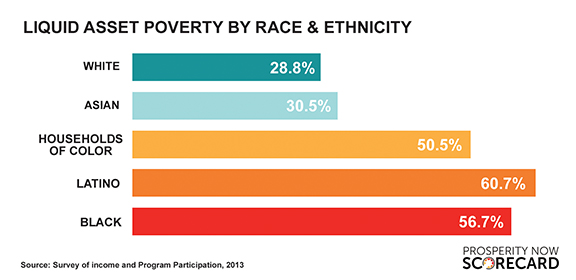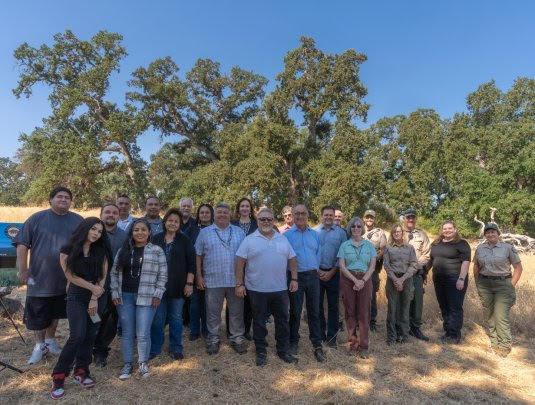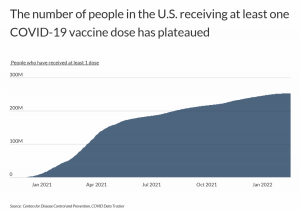The Valley Chronicle - Families financially unprepared to weather emer
Families financially unprepared to weather emergencies
Prosperity Scorecard finds more people living in ‘liquid asset poverty’
[caption id="attachment_5471" align="alignright" width="576"] Survey of Income and Program Participation, 2013
Survey of Income and Program Participation, 2013This chart shows the percentages of Liquid Asset Poverty rates, by race and ethnicity.[/caption] ■ By Mary Ann Morris / Editor While California is typically considered a prosperous state, many families still struggle to get by and don’t have enough savings to weather a three-month financial emergency, according to the 2017 Prosperity Now Scorecard. The report was compiled by Prosperity Now, a Washington, D.C. organization whose goal is to help low-income families and families of color achieve financial security. The report compiled data on five specific areas: financial assets and income, businesses and jobs, homeownership and housing, health-care, and education. This article will focus on financial assets and income concerns. According to data from Areavibes.com, while Hemet’s demographics are mainly comprised of Caucasians, approximately 38 percent of Hemet residents are Hispanic/Latino; African Americans comprise about 7 percent of Hemet households. San Jacinto’s population is about 61 percent Caucasian, a little more than half are Hispanic/Latino and about 6.5 percent are African American. See the table for complete demographic information. (Totals add up to more than 100 percent because Latinos/Hispanics can be of any race.) California is a harbinger of the national rise in Latinos, due to its proximity to the Mexico border and California’s vast agricultural community. Latinos accounted for most of the nation’s growth – 56 percent – from 2000 to 2010, according to the Pew Research Center. No savings for financial emergencies Only 46 percent of California households have emergency savings, which means, when unexpected costs occur, there is no money earmarked or available to pay for such emergencies. In fact, according to the Scorecard, 37.2 percent of Californians live in the financial red zone of “liquid asset poverty,” meaning they don’t have enough in liquid savings – cash or assets that can easily be converted into cash – to replace their income at the poverty level for three months if they lose their jobs or can’t work. However, many households that do have the ability to tap into savings, including retirement accounts, lack enough resources to keep their heads above water long if a crisis strikes. The Scorecard determined that the minimum cushion needed for a family of four to get by is $6,150. However, more than one-third of all families don’t have or can’t access this type of money. Not having savings increases one’s risk of homelessness, especially when emergencies crop up. As the saying goes, most people are two or three missed paychecks away from being homeless, forcing families to live with other families, in their vehicles, or in temporary housing such as motels. While low-income households are likely to be liquid asset poor, a significant number of higher-income households are also financially unprepared to weather a crisis. Nearly 18 percent of households earning $64,632 to $106,788 annually are liquid asset poor. And households of color are affected even more adversely. According to the study, African American, Latino and Asian households are all less likely to save for emergencies than Caucasian households (45.6 percent, 42.5 percent and 52.9 percent, respectively, compared to 61.3 percent of Caucasian households). This year the Scorecard added a new metric to measure – income volatility – which examines the stability of household income from month to month. Income volatility has increased in the United States over recent decades and nationally, 20 percent of households experience “moderate to significant” income fluctuations from month to month. The rate of income volatility in California is slightly higher, at 21.4 percent. How does the Scorecard affect San Jacinto Valley residents? It’s no secret that the San Jacinto Valley is at an economic disadvantage. According to city-data.com, the median income for Hemet residents in 2015 was $36,334, and the median income for San Jacinto residents was $48,119. As a whole, the 2015 median income for the state of California was $64,500. So, while the average Californian may be able to weather a financial emergency, those already struggling in our valley are at even greater risk. The San Jacinto Valley – once a retirement mecca – has seen firsthand the sharp effects of the recession and income disparity as more senior citizens are applying for help from Community Pantry, the valley’s local food bank. According to an April interview with Jim Lineberger, Community Pantry director, while the majority of the pantry’s clientele are single mothers or struggling families, the number of senior citizens coming for assistance is increasing, and increasing steadily. When a senior citizen’s spouse or partner dies, said Lineberger, that person’s income from Social Security also ceases, and many seniors face not only feed insecurity, but also with homelessness. The news isn’t any better for students. Approximately 80 percent of students in the Hemet Unified School District qualify for the free/reduced lunch program. What is the solution? While the outlook seems grim, things are actually getting better, at least in California, policy-wise. Strong state policies moved California from 10th place in the rankings to 26th place in just five years. (See Sidebar – How California rates on the Prosperity Now Scorecard, Page D1.) During that period, according to the Scorecard, an improving economy allowed the state to increase investments in education, health and a range of safety net programs designed to help families achieve financial security. Federal government resources will need to play a larger role, especially in the form of income supports. To that end, the Scorecard recommends that the government eliminate asset limits for such programs as Temporary Assistance for Needy Families (TANF), the Supplemental Nutrition Assistance Program (SNAP) and the Low Income Home Energy Assistance Program (LIHEAP). States are beginning to recognize that asset limits for such programs hinder a family’s ability to save, and by the end of 2016, eight states eliminated asset limits for TANF, 34 states and Washington, D.C. eliminated them for SNAP, and 39 states and Washington, D.C. eliminated them for LIHEAP. Other solutions identified by the Scorecard to help improve savings include prize-linked savings, which allow financial institutions to offer rewards, such as cash, for savers who make monthly deposits into low-minimum-balance savings products. The state can also promote retirement security and long-term saving by enacting state-run automatic-enrolled Individual Retirement Account (Auto-IRA) programs. California implemented legislation to create Auto-IRA programs in 2016. Next week, find out what the Scorecard says about businesses and the employment market. [caption id="attachment_5476" align="aligncenter" width="790"]
 AreaVibes.com
AreaVibes.comRacial demographics for Hemet, San Jacinto, and California as a whole. Please note: Hispanics may be of any race, so also are included in any/all of the applicable race categories.[/caption]
Soboba Band of Luiseño Indians
staffLeprechauns bring lots of green to Soboba Tribal Preschool
 English, Valley Chronicle: Thu, Feb 25, 2021
English, Valley Chronicle: Thu, Feb 25, 2021
Koi Nation of Northern California and California State Parks
staffKoi Nation of Northern California, USA
English, Valley Chronicle: Thu, Dec 8, 2022
24 Kids Shop with a Cop in Hemet
staff24 Kids Shop with a Cop in Hemet
 English, Valley Chronicle: Thu, Dec 8, 2022
English, Valley Chronicle: Thu, Dec 8, 2022
MSJC Hosts Temecula Valley Campus Dedication Ceremony
staffMSJC Hosts Temecula Valley Campus Dedication Ceremony
English, Valley Chronicle: Thu, Dec 8, 2022
NFPA urges added caution this holiday season, as Christ
staffNFPA urges added caution this holiday season, as Christmas Day and Christmas Eve are among the leading days of the year for U.S. home fires
English, Valley Chronicle: Thu, Dec 8, 2022
Stick to a “Go Safely” Game Plan: Celebrate the Holiday
staffStick to a “Go Safely” Game Plan: Celebrate the Holiday Season Responsibly National “Drive Sober or Get Pulled Over” Enforcement Campaign Begins Dec. 14
English, Valley Chronicle: Thu, Oct 27, 2022
Padilla Hosts Virtual Federal Student Debt Relief Brief
staffPadilla Hosts Virtual Federal Student Debt Relief Briefing to Encourage Californians to Apply
 English, Valley Chronicle: Thu, Jun 9, 2022
English, Valley Chronicle: Thu, Jun 9, 2022
Police Seek Help Locating Hit-and-Run Vehicle
staffPolice Seek Help Locating Hit-and-Run Vehicle
 English, Valley Chronicle: Thu, Jun 9, 2022
English, Valley Chronicle: Thu, Jun 9, 2022
Four CSUSB alumni win top award for radio show
staffFour CSUSB alumni win top award for radio show
English, Valley Chronicle: Thu, Jun 9, 2022
Follow-up: Plane Crashes Near Residential Homes in Heme
staffFollow-up: Plane Crashes Near Residential Homes in Hemet
English, Valley Chronicle: Thu, Jun 9, 2022
CSUSB Nursing Street Medicine Program partners with new
staffCSUSB Nursing Street Medicine Program partners with new mobile medical clinic
English, Valley Chronicle: Thu, Jun 9, 2022
Padilla Joins Farm Workers for a Workday as Part of the
staffPadilla Joins Farm Workers for a Workday as Part of the ‘Take Our Jobs’ Campaign
English, Valley Chronicle: Thu, Mar 24, 2022
CHP plans DUI checkpoint in Hemet Valley
staffCHP plans DUI checkpoint in Hemet Valley
English, Valley Chronicle: Thu, Mar 24, 2022
Don't undermine scientific discovery -- ever, but espec
staffDon't undermine scientific discovery -- ever, but especially now
English, Valley Chronicle: Thu, Mar 24, 2022
C.W. Driver companies breaks ground on new three-story
staffC.W. Driver companies breaks ground on new three-story stem education building
 English, Valley Chronicle: Thu, Mar 24, 2022
English, Valley Chronicle: Thu, Mar 24, 2022
35.3% Of Unvaccinated California Residents Cite Governm
staff35.3% Of Unvaccinated California Residents Cite Government Distrust
English, Valley Chronicle: Thu, Mar 24, 2022
ICYMI: Padilla Highlights From Judge Jackson’s Supreme
staffICYMI: Padilla Highlights From Judge Jackson’s Supreme Court Confirmation Hearing
English, Valley Chronicle: Thu, Mar 24, 2022
MSJC Celebrates Groundbreaking of New STEM Building and
staffMSJC Celebrates Groundbreaking of New STEM Building and Opening of New Animatronic Makerspace
English, Valley Chronicle: Thu, Mar 3, 2022
MSJC Receives $500,000 Apprenticeship Grant
staffMSJC Receives $500,000 Apprenticeship Grant
Families financially unprepared to weather emergencies
Prosperity Scorecard finds more people living in ‘liquid asset poverty’
[caption id="attachment_5471" align="alignright" width="576"] Survey of Income and Program Participation, 2013
Survey of Income and Program Participation, 2013This chart shows the percentages of Liquid Asset Poverty rates, by race and ethnicity.[/caption] ■ By Mary Ann Morris / Editor While California is typically considered a prosperous state, many families still struggle to get by and don’t have enough savings to weather a three-month financial emergency, according to the 2017 Prosperity Now Scorecard. The report was compiled by Prosperity Now, a Washington, D.C. organization whose goal is to help low-income families and families of color achieve financial security. The report compiled data on five specific areas: financial assets and income, businesses and jobs, homeownership and housing, health-care, and education. This article will focus on financial assets and income concerns. According to data from Areavibes.com, while Hemet’s demographics are mainly comprised of Caucasians, approximately 38 percent of Hemet residents are Hispanic/Latino; African Americans comprise about 7 percent of Hemet households. San Jacinto’s population is about 61 percent Caucasian, a little more than half are Hispanic/Latino and about 6.5 percent are African American. See the table for complete demographic information. (Totals add up to more than 100 percent because Latinos/Hispanics can be of any race.) California is a harbinger of the national rise in Latinos, due to its proximity to the Mexico border and California’s vast agricultural community. Latinos accounted for most of the nation’s growth – 56 percent – from 2000 to 2010, according to the Pew Research Center. No savings for financial emergencies Only 46 percent of California households have emergency savings, which means, when unexpected costs occur, there is no money earmarked or available to pay for such emergencies. In fact, according to the Scorecard, 37.2 percent of Californians live in the financial red zone of “liquid asset poverty,” meaning they don’t have enough in liquid savings – cash or assets that can easily be converted into cash – to replace their income at the poverty level for three months if they lose their jobs or can’t work. However, many households that do have the ability to tap into savings, including retirement accounts, lack enough resources to keep their heads above water long if a crisis strikes. The Scorecard determined that the minimum cushion needed for a family of four to get by is $6,150. However, more than one-third of all families don’t have or can’t access this type of money. Not having savings increases one’s risk of homelessness, especially when emergencies crop up. As the saying goes, most people are two or three missed paychecks away from being homeless, forcing families to live with other families, in their vehicles, or in temporary housing such as motels. While low-income households are likely to be liquid asset poor, a significant number of higher-income households are also financially unprepared to weather a crisis. Nearly 18 percent of households earning $64,632 to $106,788 annually are liquid asset poor. And households of color are affected even more adversely. According to the study, African American, Latino and Asian households are all less likely to save for emergencies than Caucasian households (45.6 percent, 42.5 percent and 52.9 percent, respectively, compared to 61.3 percent of Caucasian households). This year the Scorecard added a new metric to measure – income volatility – which examines the stability of household income from month to month. Income volatility has increased in the United States over recent decades and nationally, 20 percent of households experience “moderate to significant” income fluctuations from month to month. The rate of income volatility in California is slightly higher, at 21.4 percent. How does the Scorecard affect San Jacinto Valley residents? It’s no secret that the San Jacinto Valley is at an economic disadvantage. According to city-data.com, the median income for Hemet residents in 2015 was $36,334, and the median income for San Jacinto residents was $48,119. As a whole, the 2015 median income for the state of California was $64,500. So, while the average Californian may be able to weather a financial emergency, those already struggling in our valley are at even greater risk. The San Jacinto Valley – once a retirement mecca – has seen firsthand the sharp effects of the recession and income disparity as more senior citizens are applying for help from Community Pantry, the valley’s local food bank. According to an April interview with Jim Lineberger, Community Pantry director, while the majority of the pantry’s clientele are single mothers or struggling families, the number of senior citizens coming for assistance is increasing, and increasing steadily. When a senior citizen’s spouse or partner dies, said Lineberger, that person’s income from Social Security also ceases, and many seniors face not only feed insecurity, but also with homelessness. The news isn’t any better for students. Approximately 80 percent of students in the Hemet Unified School District qualify for the free/reduced lunch program. What is the solution? While the outlook seems grim, things are actually getting better, at least in California, policy-wise. Strong state policies moved California from 10th place in the rankings to 26th place in just five years. (See Sidebar – How California rates on the Prosperity Now Scorecard, Page D1.) During that period, according to the Scorecard, an improving economy allowed the state to increase investments in education, health and a range of safety net programs designed to help families achieve financial security. Federal government resources will need to play a larger role, especially in the form of income supports. To that end, the Scorecard recommends that the government eliminate asset limits for such programs as Temporary Assistance for Needy Families (TANF), the Supplemental Nutrition Assistance Program (SNAP) and the Low Income Home Energy Assistance Program (LIHEAP). States are beginning to recognize that asset limits for such programs hinder a family’s ability to save, and by the end of 2016, eight states eliminated asset limits for TANF, 34 states and Washington, D.C. eliminated them for SNAP, and 39 states and Washington, D.C. eliminated them for LIHEAP. Other solutions identified by the Scorecard to help improve savings include prize-linked savings, which allow financial institutions to offer rewards, such as cash, for savers who make monthly deposits into low-minimum-balance savings products. The state can also promote retirement security and long-term saving by enacting state-run automatic-enrolled Individual Retirement Account (Auto-IRA) programs. California implemented legislation to create Auto-IRA programs in 2016. Next week, find out what the Scorecard says about businesses and the employment market. [caption id="attachment_5476" align="aligncenter" width="790"]
 AreaVibes.com
AreaVibes.comRacial demographics for Hemet, San Jacinto, and California as a whole. Please note: Hispanics may be of any race, so also are included in any/all of the applicable race categories.[/caption]
The Valley Chronicle - Families financially unprepared to weather emer
Families financially unprepared to weather emergencies

Koi Nation of Northern California and California State Parks Renew Memorandum of Understanding and Celebrate Renaming of Ridge and Trail
Koi Nation of Northern California, USA

MSJC Hosts Temecula Valley Campus Dedication Ceremony
MSJC Hosts Temecula Valley Campus Dedication Ceremony
Stick to a “Go Safely” Game Plan: Celebrate the Holiday
Stick to a “Go Safely” Game Plan: Celebrate the Holiday Season Responsibly National “Drive Sober or Get Pulled Over” Enforcement Campaign Begins Dec. 14

Police Seek Help Locating Hit-and-Run Vehicle
Police Seek Help Locating Hit-and-Run Vehicle
Follow-up: Plane Crashes Near Residential Homes in Hemet
Follow-up: Plane Crashes Near Residential Homes in Hemet
Padilla Joins Farm Workers for a Workday as Part of the
Padilla Joins Farm Workers for a Workday as Part of the ‘Take Our Jobs’ Campaign
Don't undermine scientific discovery -- ever, but espec
Don't undermine scientific discovery -- ever, but especially now

35.3% Of Unvaccinated California Residents Cite Governm
35.3% Of Unvaccinated California Residents Cite Government Distrust
MSJC Celebrates Groundbreaking of New STEM Building and
MSJC Celebrates Groundbreaking of New STEM Building and Opening of New Animatronic Makerspace
MSJC Receives $500,000 Apprenticeship Grant
MSJC Receives $500,000 Apprenticeship Grant
24 Kids Shop with a Cop in Hemet
24 Kids Shop with a Cop in Hemet
Stick to a “Go Safely” Game Plan: Celebrate the Holiday
Stick to a “Go Safely” Game Plan: Celebrate the Holiday Season Responsibly National “Drive Sober or Get Pulled Over” Enforcement Campaign Begins Dec. 14

Four CSUSB alumni win top award for radio show
Four CSUSB alumni win top award for radio show
Padilla Joins Farm Workers for a Workday as Part of the
Padilla Joins Farm Workers for a Workday as Part of the ‘Take Our Jobs’ Campaign
C.W. Driver companies breaks ground on new three-story
C.W. Driver companies breaks ground on new three-story stem education building
MSJC Celebrates Groundbreaking of New STEM Building and
MSJC Celebrates Groundbreaking of New STEM Building and Opening of New Animatronic Makerspace










